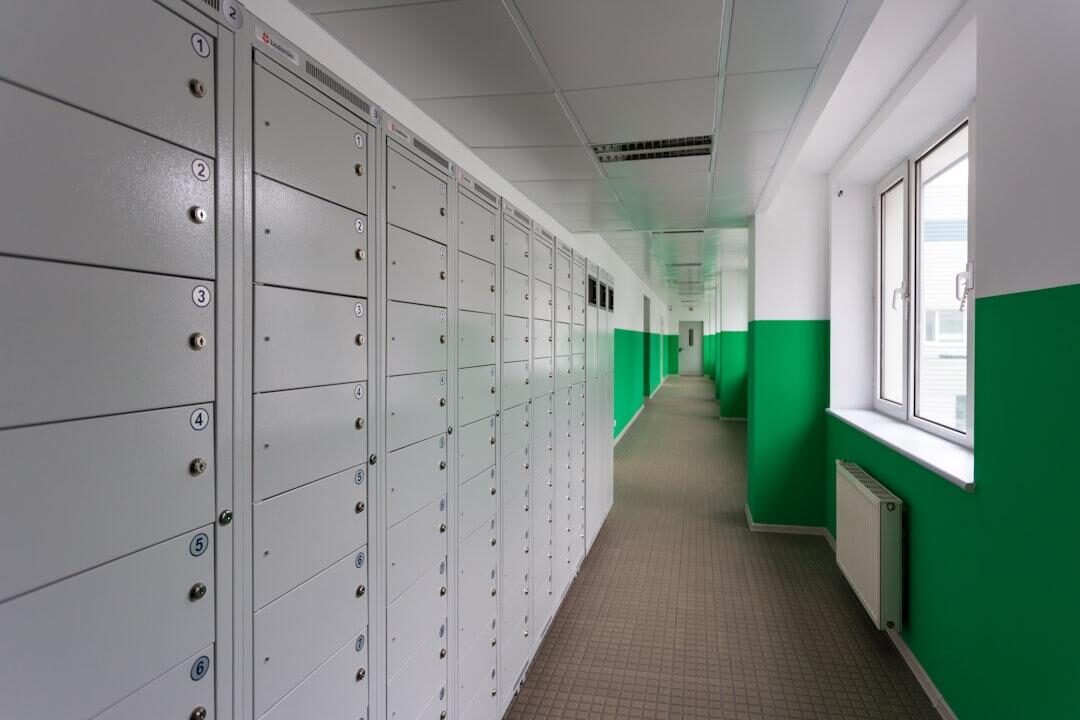Smart Storage: How Technology Is Transforming Office Lockers

Organizations are looking for solutions that improve productivity and maximize efficiency, and one of them is the way offices manage storage. Traditional office lockers, underutilized and static, are giving way to innovative systems that incorporate advanced technology to meet the needs of modern workplaces.
Smart storage solutions improve access, security, and optimize space usage. Let’s dive into how technological advancements are reshaping office lockers, making them more functional, secure, and adaptable to office dynamics.
The Rise of Smart Locker Systems
The initial concept of office lockers was straightforward: a space to store personal items safely. Thanks to the investment in a smart locker system for workplaces, businesses can spend less money on the number of lockers and more on operational efficiency and automation. Smart lockers use RFID, touch screens, and mobile apps for a better user experience. These systems replace traditional keys and locks, enabling seamless access for employees through unique codes or smartphone applications.
The retrieval of personal items is much easier: smart lockers provide a digital trail of who accessed which locker and when. A smart locker system can accommodate varying numbers of employees and reduce wasted space that comes with traditional storage methods.
Security and Access Control
Traditional lockers are vulnerable to being compromised through lost keys or broken locks. Smart lockers come equipped with advanced security measures designed to protect users’ possessions. They feature digital keypads, biometric scanners, or mobile access that only authorized personnel can access. Beyond user authentication, these systems provide an additional layer of security through logging and tracking. With remote locking and unlocking, administrators can quickly respond to security concerns from anywhere so that sensitive items are always protected.
Businesses can connect smart lockers to existing security systems or employee management tools, creating a comprehensive security environment. This interconnectedness safeguards the locker contents and improves workplace safety.
User Experience and Flexibility
Smart lockers contribute to this goal by offering facilities that are tailored to the dynamic needs of users. Automated notifications inform employees when their lockers are ready or if someone has used their designated space. Users can book lockers in advance or find available units quickly through an app, which eliminates the frustration associated with traditional systems.
Smart locker systems facilitate easy onboarding of new employees by allowing instant access to storage solutions without the need for lengthy manual processes. Companies can customize locker layouts based on the specific needs of their workforce, accommodating varying sizes and configurations that best suit their operations. As businesses evolve, so too must the tools they provide, and smart lockers represent a forward-thinking solution to meet these demands.
Cost-Effective Storage Solutions
The initial expenses might be higher than traditional lockers, but the benefits realized through improved space utilization and reduced labor costs create a favorable return on investment. Thanks to real-time analytics and monitoring, companies can identify underutilized areas and make adjustments accordingly.
Companies can optimize staffing in ways that increase efficiency and employee satisfaction without requiring extensive resources. Smart lockers support eco-friendly practices by reducing the need for multiple sets of keys or physical lock systems. Organizations can save money and improve their corporate responsibility initiatives.
The Role of Technology in Sustainability
For modern businesses, sustainability is a priority. Smart locker systems contribute to environmental goals by minimizing waste and promoting responsible resource usage. Traditional office lockers utilized materials that were neither sustainable nor recyclable, resulting in excessive waste when lockers were no longer utilized. Smart lockers emphasize recyclable materials and modular designs, which support sustainable practices during production and use.
Since these systems can be installed in various configurations, companies can avoid the need for renovations that lead to increased waste. The digital aspects of smart lockers decrease the environmental footprint as they negate the need for physical keys and locks. Companies can track usage data over time to further improve sustainability efforts. Understanding locker usage patterns can identify opportunities to switch to a purely digital locker approach that eliminates the need for physical resources.
Transforming Workplace Culture Through Innovation
When organizations value security and efficiency, it reflects outwards in their culture and creates a more productive environment. Employees can manage their personal items as they see fit without relying on shared resources. Self-sufficiency will result in greater job satisfaction and employee retention rates. Workplaces that embrace advanced technology signal to their employees and potential recruits that they are committed to creating an optimal work environment.
Employers can improve collaboration and creative environments, reflecting a commitment to employee well-being. As workers feel more secure and empowered with smart innovations, they become more engaged in their roles.

The transformation of office lockers through technology signifies a pivotal shift in how businesses function in dynamic environments. Adopting smart locker systems improves security and flexibility, and promotes sustainability and employee empowerment.
As organizations continue to embrace technological advancements, they create more efficient, innovative, and collaborative workplaces that meet the needs of both the employees and the organization.

Source: Smart Storage: How Technology Is Transforming Office Lockers




